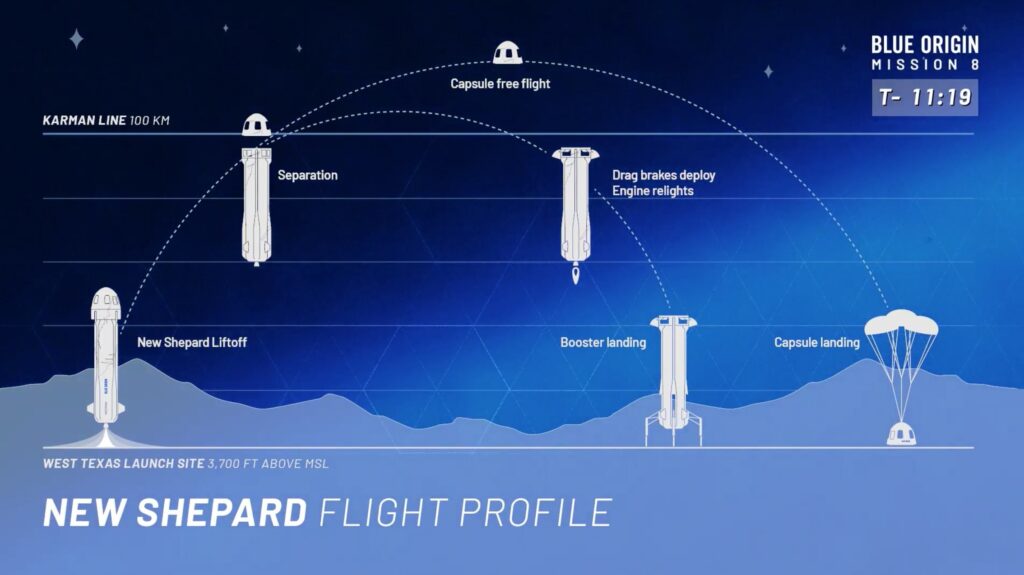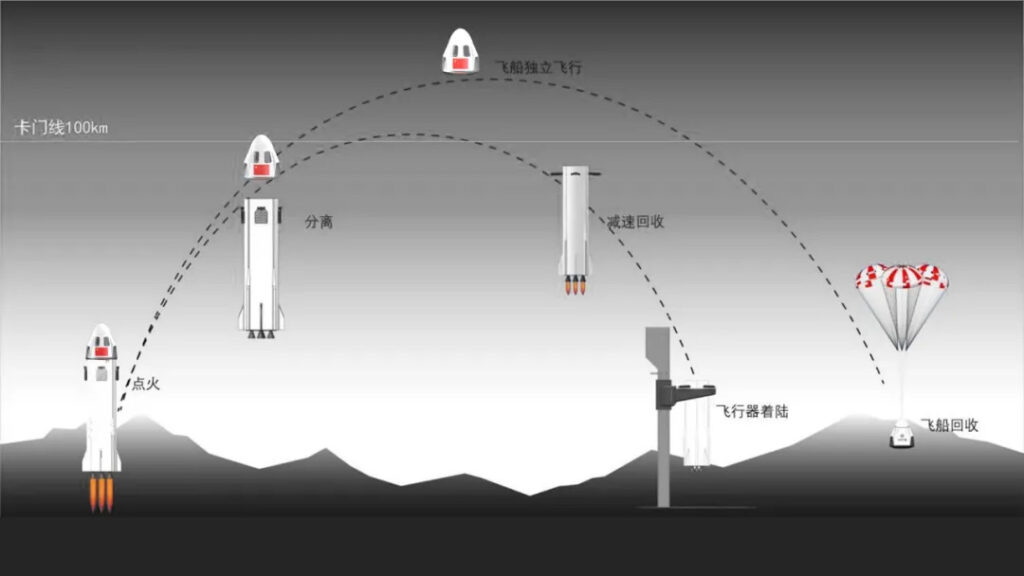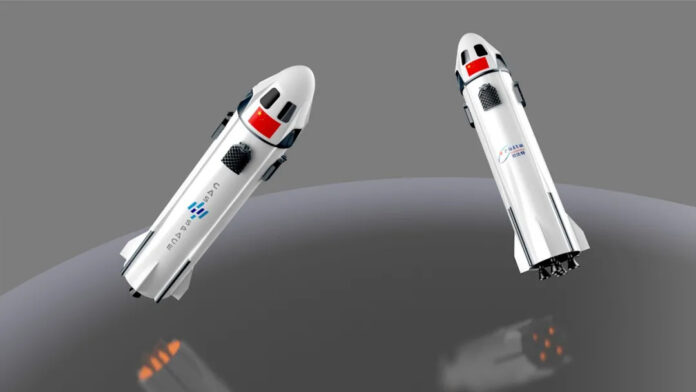Space is a realm that can be exploited for many different, and sometimes contradicting, purposes – from satellite communication, to climate change monitoring, including space tourism. This summer, we have seen two US space companies sending tourists in Low Earth Orbit aboard suborbital spacecraft: Blue Origin’s New Shepard, and Virgin Galactic’s VSS Unity spaceship. Recent space news seem to indicate that China is also interested in space tourism and currently seeking to develop a Chinese New Shepard.
CAS Space, the commercial launch company backed by the Chinese Academy of Sciences and with support from the Guangzhou Government, announced in August 2021 an agreement with Zhuhai Orbita to develop a rocket that looks conceptually very similar to the New Shepard, and that will be used for space tourism. This is a significant step forward, considering that there was a lack of tangible space tourism projects in China – although some companies like Landspace, iSpace or Space Transportation did mention it in the past.
Let’s dive into CAS Space’s spacecraft:
First, the booster rocket. Unsurprisingly for a suborbital launch, the rocket adopts a single-stage architecture, with a stage diameter of 3.35m, and powered by 5 sets of 15t thrust liquid-fueled kerolox engines called “Xuanyuan”, which is still under development at the very moment by another fellow CAS commercial spinoff XAPT (short for Xi’an Aerospace Propulsion Technology). The Xuanyuan engine was designed from the start for reusability, with the ability to throttle and restart the engine multiple times. This enables the first stage to be recovered, in a similar way to New Shepard. Together, the 5 engines provide a liftoff thrust of 75t, lifting the rocket’s liftoff weight of 70t. Next, the top of the rocket hosts a capsule, also with a diameter of 3.35m, a height of 3m, and 4 panoramic windows. The cabin is designed for 7 passengers, making it more or less the equivalent of the New Shepard in terms of crew, which is designed for 6.

Similarities and differences
Let’s now look at the similarities and differences between CAS Space’s spacecraft and the New Shepard, based on the illustrations of CAS Space’s suborbital spacecraft as provided in the article (hence assuming that such illustrations are technologically accurate).
- The two spacecrafts are, to a large extent, similar: both exhibit similar single booster rocket architecture, both return to Earth thanks to 3 parachutes (speculation based on what is seen on the CAS Space illustration), and both capsules look quite similar (although similarities are actually stronger with SpaceX’s Dragon). Like the New Shepard capsule, CAS Space’s is equipped with an escape system – presumably solid rocket motors. CAS Space is aiming for a flight time of 10 minutes, which is similar to the 11 minutes promised by Blue Origin on their corporate website.
- The main differences seem to lie in three areas. First of all, the New Shepard uses a single in-house BE-3 hydrolox engine using a tap-off cycle, while the CAS Space version uses the 5 Xuanyuan kerolox engine using an open generator cycle. The second and probably biggest difference is regarding aerodynamic control. The New Shepard booster rocket uses aft fins at the bottom that tilt and are used up to Mach 4; it also possesses wedge fins for stability at the top, a ring fin in order to enhance stability by moving the center of pressure towards the top during descent, as well as drag brakes to lower the speed during descent (similar to drag brakes on a plane). Lastly, the BE-3 engine provides additional control through gimballing. While the CAS Space rocket will probably also rely on gimballing, the aerodynamic control surfaces shown in the illustration only include grid fins. And last difference, if vertical landing for both booster rockets is done retropropulsively, New Shepard uses landing legs while the CAS Space system seems to be caught in midair by a launch tower similar to SpaceX’s Starship.
Finally, it seems that the CAS Space capsule has thrusters on the side that have some similarity with SpaceX’s Dragon engines.


In terms of timeline, CAS Space plans for a first demonstration flight in 2022, followed by full-fledged unmanned suborbital flight in 2023, and the start of suborbital tourism in 2024. The company estimates that 1,000 passengers can be transported into space each year. And fun fact, the landing site for the rocket will be constructed within an aerospace theme park, space experience hall, and aerospace science education base. The passengers will receive a short training before taking a 10-minute flight that traverses the Karman Line, providing passengers with 3 minutes of “zero gravity” and enabling them to be called astronauts.
Overall, an Interesting, although early-stage development in China of suborbital crewed spaceflight. Yet ultimately, even if 1,000 customers per year can go into orbit, suborbital tourism is still a truly ostentatious display of wealth, and one that I would have expected would not be particularly well-received in China at this particular time.



